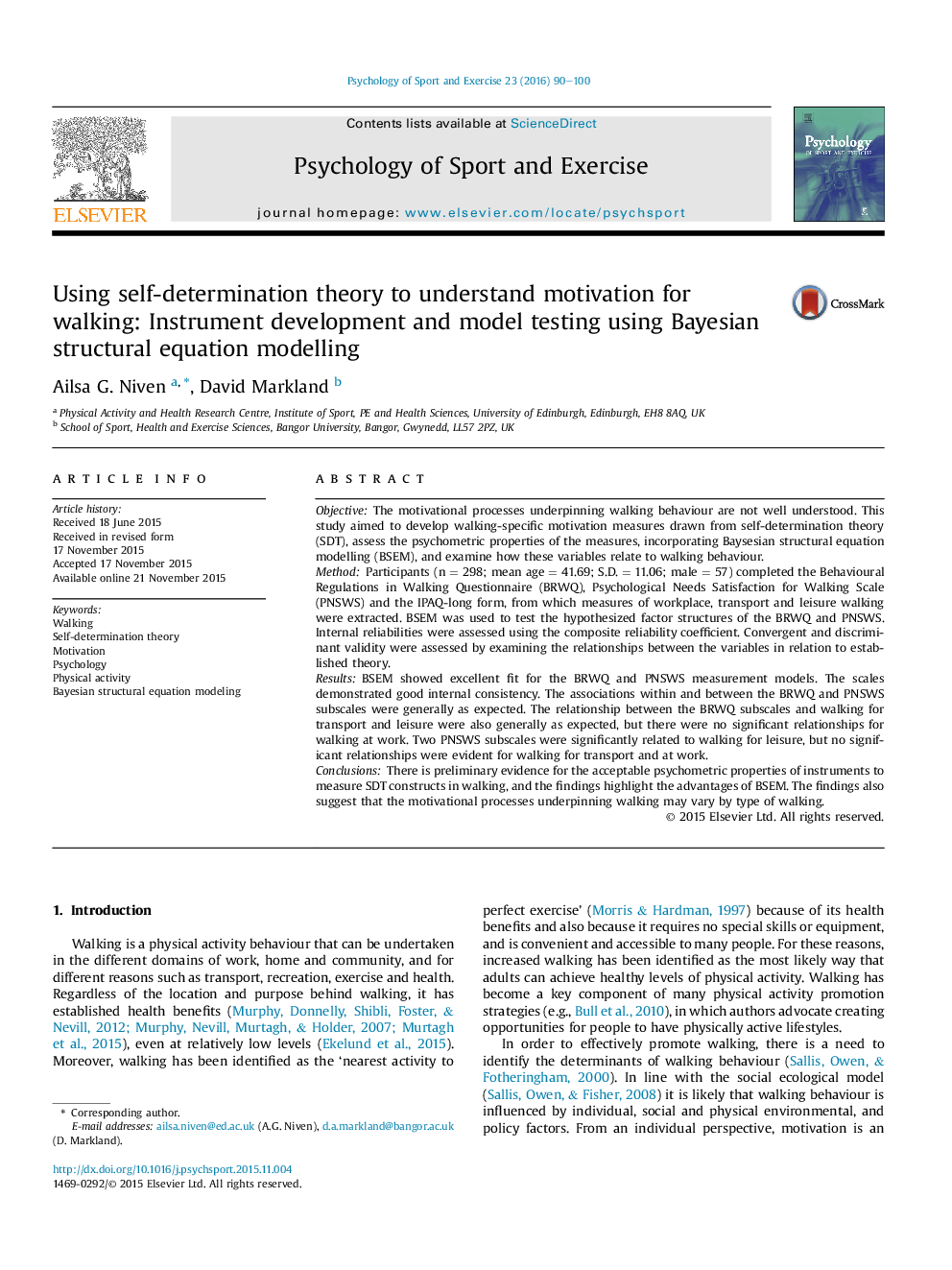| کد مقاله | کد نشریه | سال انتشار | مقاله انگلیسی | نسخه تمام متن |
|---|---|---|---|---|
| 894240 | 1472104 | 2016 | 11 صفحه PDF | دانلود رایگان |
• Focused on the important health behaviour of walking.
• Shows the value of Bayesian structural equation modelling in instrument development.
• Developed credible SDT based walking-specific measures.
• Examined the motivational processes underpinning walking behaviour.
ObjectiveThe motivational processes underpinning walking behaviour are not well understood. This study aimed to develop walking-specific motivation measures drawn from self-determination theory (SDT), assess the psychometric properties of the measures, incorporating Baysesian structural equation modelling (BSEM), and examine how these variables relate to walking behaviour.MethodParticipants (n = 298; mean age = 41.69; S.D. = 11.06; male = 57) completed the Behavioural Regulations in Walking Questionnaire (BRWQ), Psychological Needs Satisfaction for Walking Scale (PNSWS) and the IPAQ-long form, from which measures of workplace, transport and leisure walking were extracted. BSEM was used to test the hypothesized factor structures of the BRWQ and PNSWS. Internal reliabilities were assessed using the composite reliability coefficient. Convergent and discriminant validity were assessed by examining the relationships between the variables in relation to established theory.ResultsBSEM showed excellent fit for the BRWQ and PNSWS measurement models. The scales demonstrated good internal consistency. The associations within and between the BRWQ and PNSWS subscales were generally as expected. The relationship between the BRWQ subscales and walking for transport and leisure were also generally as expected, but there were no significant relationships for walking at work. Two PNSWS subscales were significantly related to walking for leisure, but no significant relationships were evident for walking for transport and at work.ConclusionsThere is preliminary evidence for the acceptable psychometric properties of instruments to measure SDT constructs in walking, and the findings highlight the advantages of BSEM. The findings also suggest that the motivational processes underpinning walking may vary by type of walking.
Journal: Psychology of Sport and Exercise - Volume 23, March 2016, Pages 90–100
